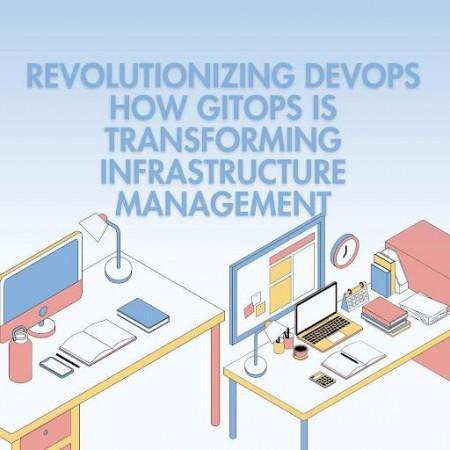
A New Era in DevOps, Kowshik Sakinala, a leading voice in the field of software development and IT operations, explores the growing impact of GitOps in modern infrastructure management. His insights highlight how this emerging approach is reshaping DevOps by enhancing automation, consistency, and reliability.
Understanding GitOps: A Shift in Infrastructure Management
GitOps is an innovative operational framework that extends DevOps principles by using Git repositories as the single source of truth for declarative infrastructure and applications. Unlike traditional methods, where manual configurations can lead to inconsistencies, GitOps enforces automation, version control, and continuous reconciliation to maintain system integrity.
This approach empowers teams with enhanced collaboration, streamlined deployments, and improved security posture through immutable infrastructure practices and comprehensive audit capabilities.
Core Principles Powering GitOps
At the heart of GitOps are four fundamental principles:
- Declarative Configuration: The entire system state is defined in configuration files, eliminating ambiguity.
- Version Control and Immutability: Git tracks all changes, allowing easy rollback and auditability.
- Automated Deployment: Any change to the Git repository automatically triggers system updates.
- Continuous Reconciliation: Automated agents ensure the actual system state always aligns with the desired configuration.
Enhancing Efficiency with GitOps Workflow
The GitOps workflow simplifies infrastructure management by introducing an automated, self-correcting system. By continuously monitoring the Git repository and deployed applications, discrepancies are identified and corrected automatically, ensuring high system reliability. This methodology also strengthens security, as unauthorized modifications are instantly detected and reversed.
Additionally, GitOps promotes transparency by maintaining a complete audit trail of all changes through Git's version control capabilities. Team collaboration improves as all infrastructure modifications follow standard code review processes. This declarative approach reduces configuration drift and enables rapid disaster recovery by recreating the entire infrastructure from the Git repository, which serves as the single source of truth.
Argo CD: The Cornerstone of GitOps Implementation
One of the most influential tools in GitOps adoption is Argo CD, an open-source continuous delivery tool specifically designed for Kubernetes environments. Key features of Argo CD include:
- Seamless Kubernetes Integration: Supports Kubernetes manifests and Helm charts for streamlined deployments.
- Automated Rollbacks: Quickly restores previous stable versions if issues arise.
- Real-time Monitoring: Provides live synchronization status and deployment visualization.
- User-Friendly Interface: Simplifies the management of complex applications.
The Benefits of GitOps in Software Development
GitOps delivers multiple advantages that are transforming the DevOps landscape:
- Streamlined Continuous Deployment: Automation reduces manual errors and accelerates deployment cycles.
- Version-controlled configurations allow developers and operations teams to work cohesively.
- Improved System Stability: Continuous reconciliation prevents configuration drift and enforces consistency.
- Scalability in Microservices Architectures: GitOps simplifies the deployment and management of distributed services.
Overcoming Challenges in GitOps Adoption
Despite its advantages, GitOps implementation presents certain challenges:
- Cultural Resistance: Teams accustomed to traditional deployment models may require time and training to adapt.
- Security Considerations: Storing infrastructure configurations in Git demands robust access controls and encryption.
- Complex Multi-Cluster Management: Organizations operating at scale must adopt specialized tools for handling multiple environments.
The Future of GitOps: AI and Emerging Technologies
The future of GitOps looks promising, with continuous advancements in automation and intelligence. Emerging trends include:
- Multi-Cluster Management Tools: Simplifying large-scale infrastructure orchestration.
- AI-Driven Automation: Machine learning algorithms optimizing deployment strategies.
- Predictive Scaling: AI models dynamically adjusting resources based on real-time usage patterns.
Enhanced Security Measures: Advanced threat detection and response mechanisms integrated into GitOps workflows.
In conclusion,GitOps is not just an evolution of DevOps; it is a transformative force redefining infrastructure management. As automation, reliability, and security take center stage in modern software development, the adoption of GitOps will continue to rise. Kowshik Sakinala's exploration of this methodology provides invaluable insights for organizations looking to stay ahead in an increasingly complex digital landscape.

















